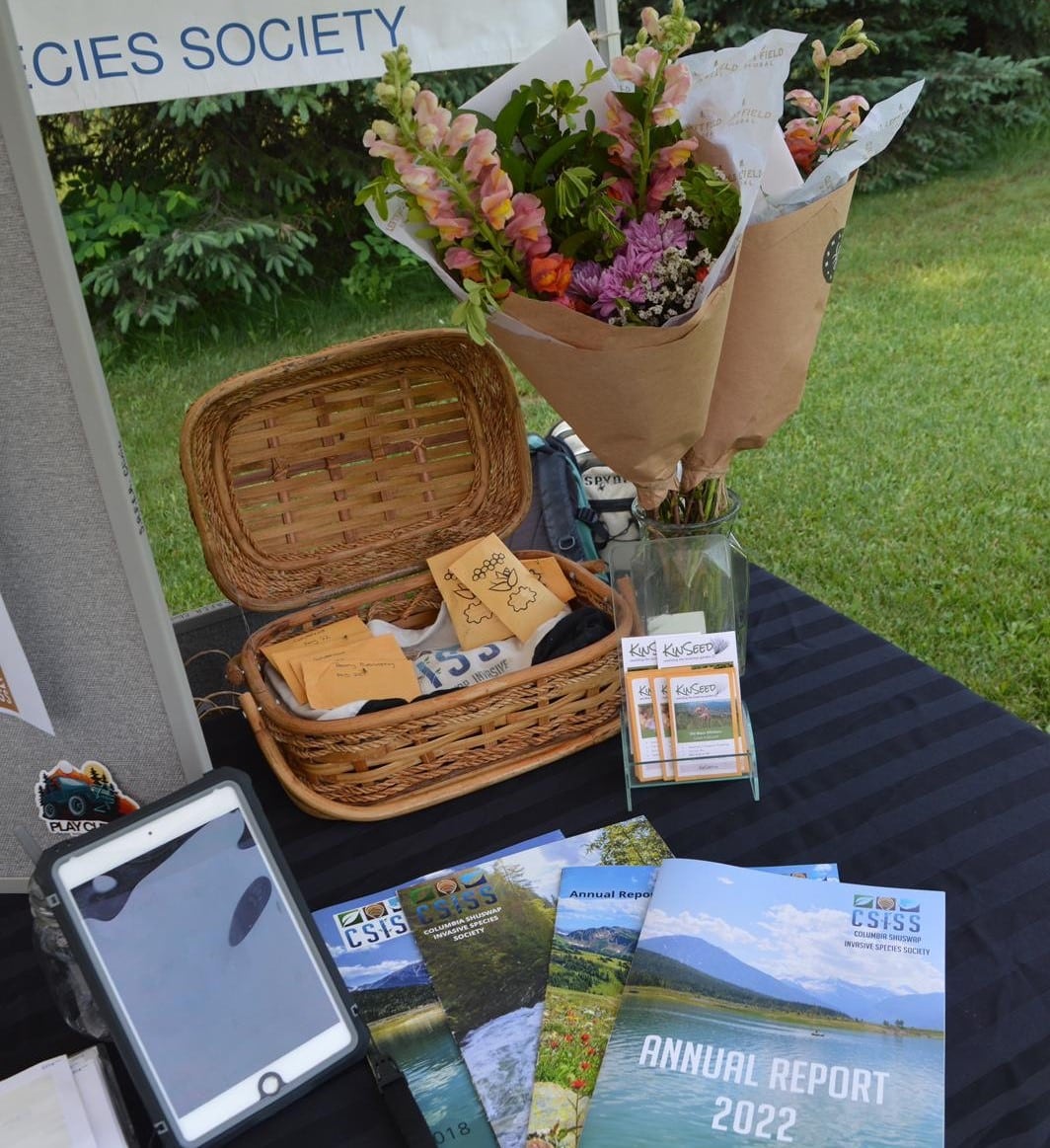By Lisa Houle | June 23, 2023
The Columbia Shuswap Invasive Species Society (CSISS) is 10! This registered not-for-profit regional invasive species society has been making a big difference on the ground in the Columbia Shuswap Regional District since 2013.
CSISS’s aim has always been to develop a collaborative and coordinated approach to invasive species management in the region. In collaboration with the Invasive Species Council of BC (ISCBC), CSISS is part of a network of 13 regional invasive species groups in BC working to ‘inspire action, coordinate management and prevent the spread of invasive species within their jurisdictions.’
Executive Director Robyn Hooper believes the key to this 10-year success story has been its people.
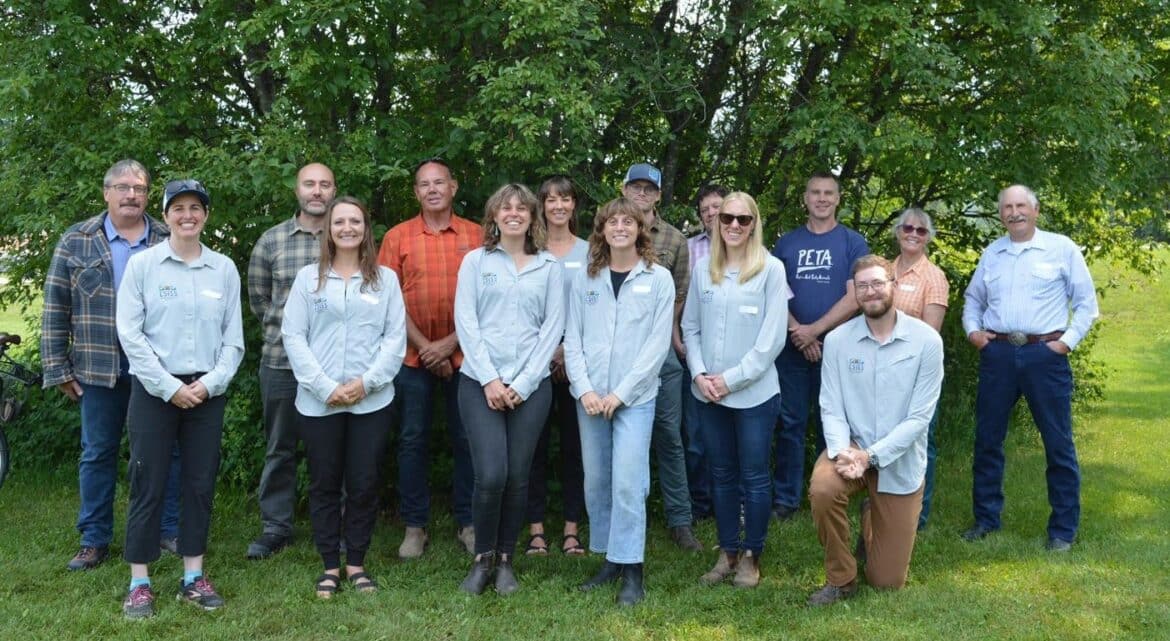
“We are incredibly grateful for the support of our longstanding board members, staff, contractors, funders, volunteers, in kind contributors, and other keys partners in the past 10 years. It takes a big team to do this work and we’ve had incredible support from around the region,” she said.
CSISS recently gathered a small group for their anniversary celebration, and it was a great opportunity to take a walk down memory lane.
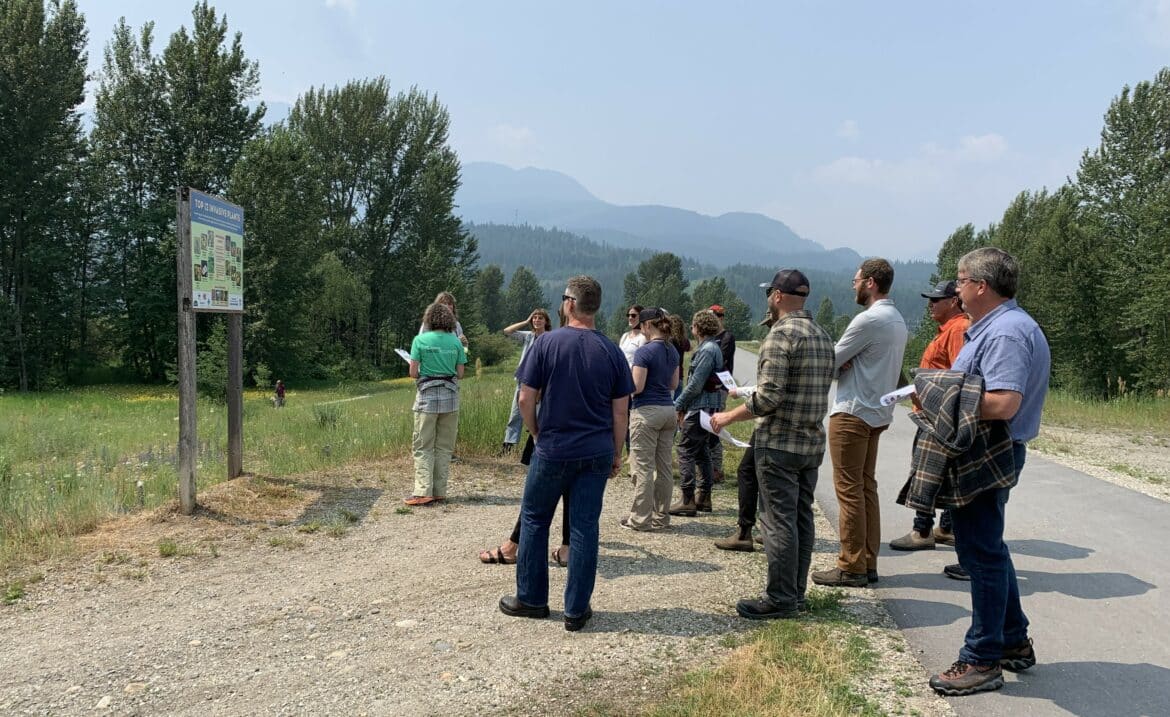
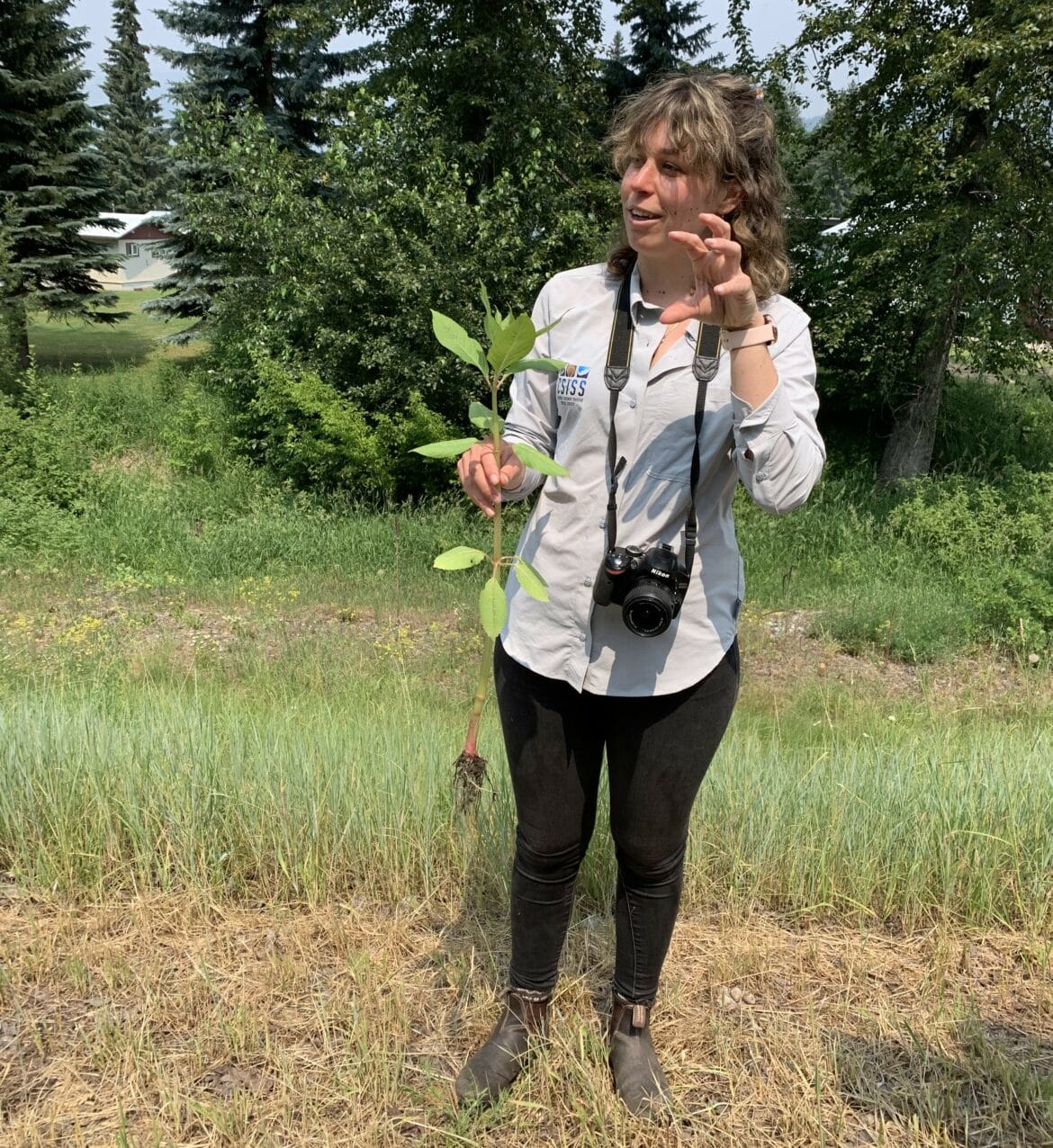
“We heard a number of highlights from the last 10 years – in particular the story of working with the Massey family on Little White Lake to help combat invasive Yellow flag iris. It’s been great to work with such an enthusiastic group who really care about their backyard, even with such a difficult-to-treat plant. With a larger grant, we were able to treat several sites at the larger connected White Lake and continue to partner every year with Little White Lake families for an event,” said Robyn. “This year we are hosting a weed pull event in conjunction with the Skwlāx te Secwepemcúl̓ecw Guardians and some of their knowledge keepers. The work keeps reminding me that there’s always more to learn and more to do!”
Robyn’s personal interest in invasive species spans more than a decade. Prior to joining CSISS in 2014, she worked in the climate change field and could see that invasive species were a big part of conservation science. She realized how important it was to protect biodiversity.
“I think my interest in invasive species was borne out of a general care for the planet and wanting to do better as humans and stewards,” said Robyn, noting that while there is a lot of pessimism that stems from this line of work, she must remain hopeful. “I think I am drawn to difficult work because I see room for hope and for improvement and making a difference. I am hopeful anytime we get more groups involved, or pull a bag of invasive plants, or find no invasive mussels in our waterbodies – it all matters.”
CSISS has a list of high priority invasives for the Columbia Shuswap region, but these days they are on high alert for one invasive species of note: Invasive mussels.
“We are most concerned about Zebra and Quagga mussels (ZQM) getting into BC and into this region given the importance of our freshwater for Indigenous values, drinking water, hydropower, fishing, recreation and so much more,” said Robyn. “The recent economic impact report shows just how devastating the invasion of this species would be for the province, and our region in particular.”
Given the risk posed by this invader as well as the other invasive species on their priority list, the work to educate, survey and act continues.
“We care about the economy, society and environment of the Columbia Shuswap region, and it’s important to protect these from the impacts of invasive species for now and for future generations to come,” said Robyn, noting the incredible diversity of the region, from the lakes and interior rainforest to the picturesque alpine meadows. “We are so lucky to live in such a beautiful, pristine area, and our work to protect this region from invasive species is so important!”
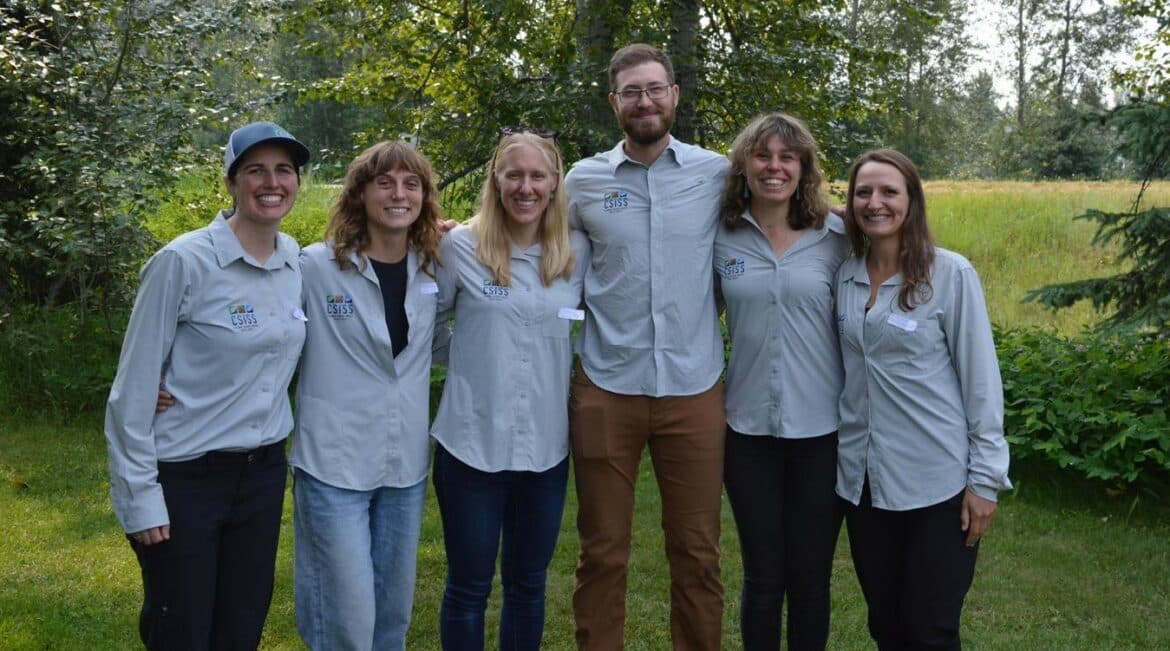
From initiatives developed to major milestones achieved, Robyn has seen a lot accomplished at CSISS over the years. And the stats are impressive.
“In terms of outreach, we’ve had 24,872 direct interactions, 14,610 educational materials delivered, 810 events attended, 2,480 landowner outreach letters sent, had 389 media appearances, and more. For our field program, we completed 6,612 invasive plant surveys, 237 sites were mechanically treated, held 74 invasive weed pull events, and submitted 561 invasive species reports,” said Robyn. “For the aquatic program, 532 plankton tows for ZQM were found negative, 52 substrate samplers were deployed, had 1,531 boater interactions, and installed 47 Clean Drain Dry signs.”
Congratulations on your milestone CSISS, and cheers to another decade of dedicated service!
Lisa is a Communications and Outreach Coordinator at ISCBC. She values a diverse environment and connecting with others about environmental protection. In her spare time Lisa enjoys spending time at the ocean and beach combing for sea glass. You can reach Lisa at lhoule@bcinvasives.ca
Share


